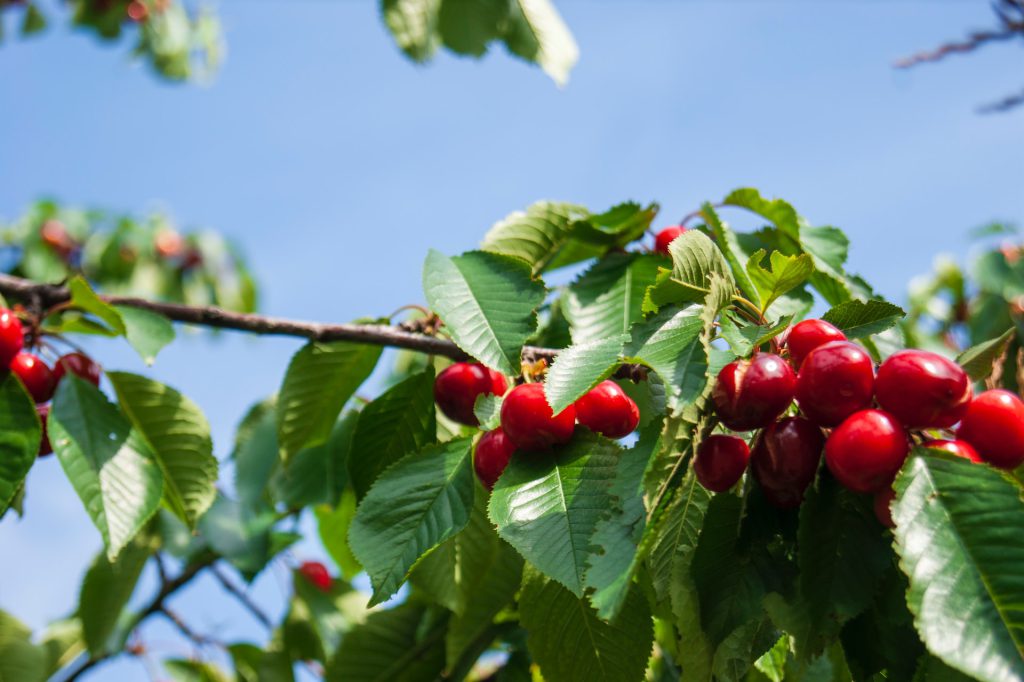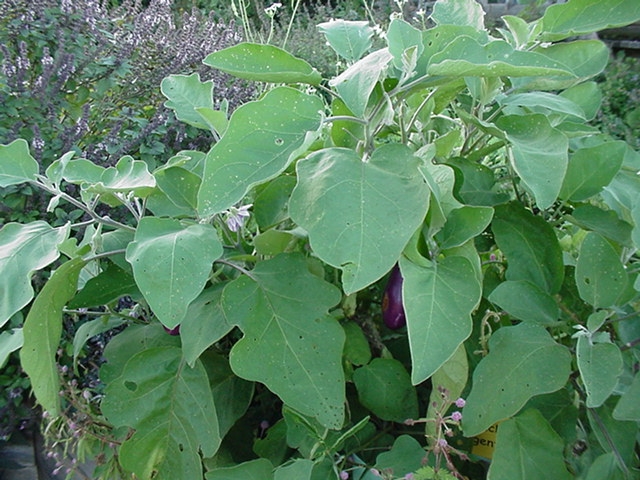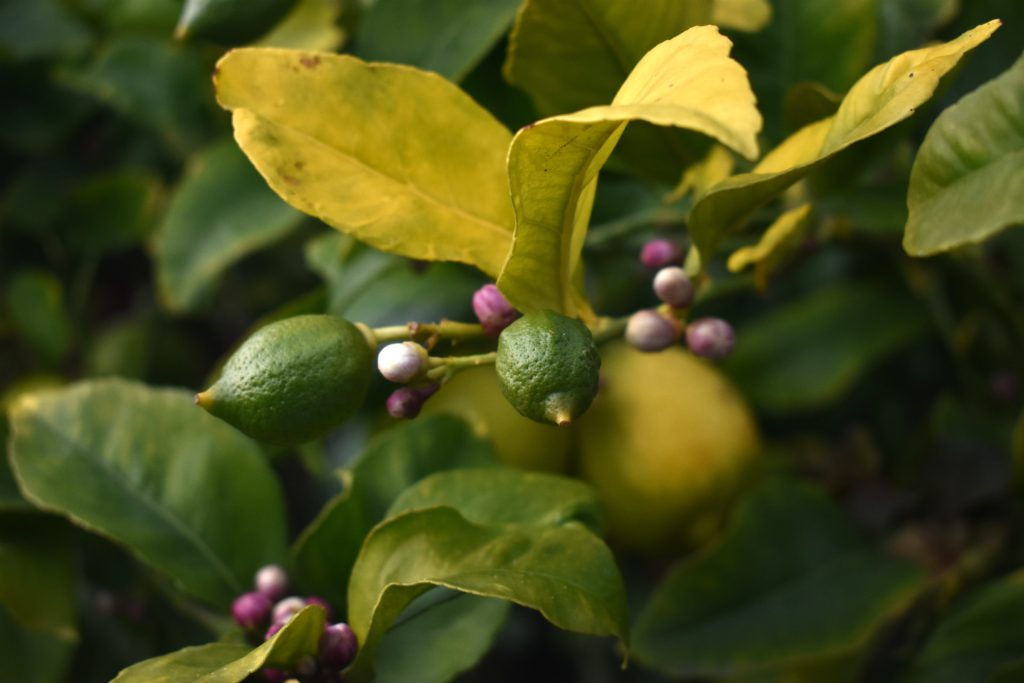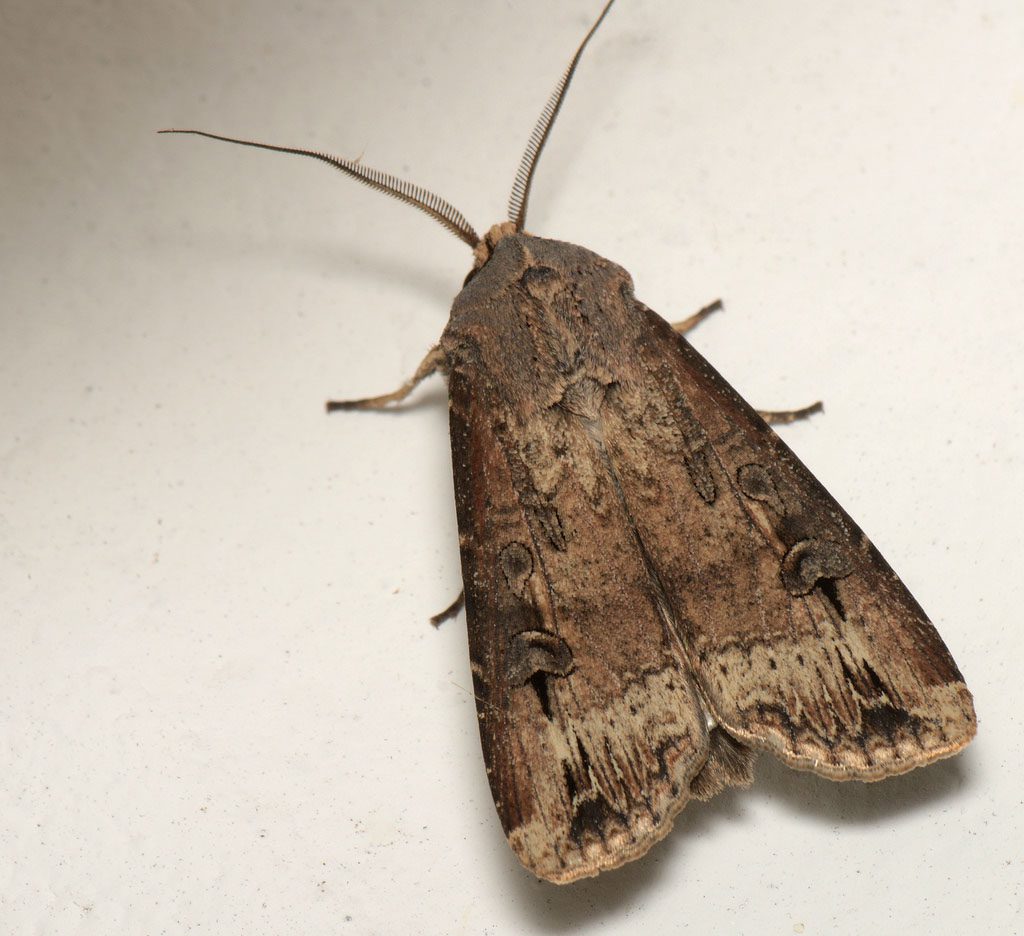If you see many small black spots under the leaves on pears, quince, apple trees, eggplants and the leaves on the top are discoloured and lose their green colour, then you have an infestation of Tingidae (Lace Bugs).
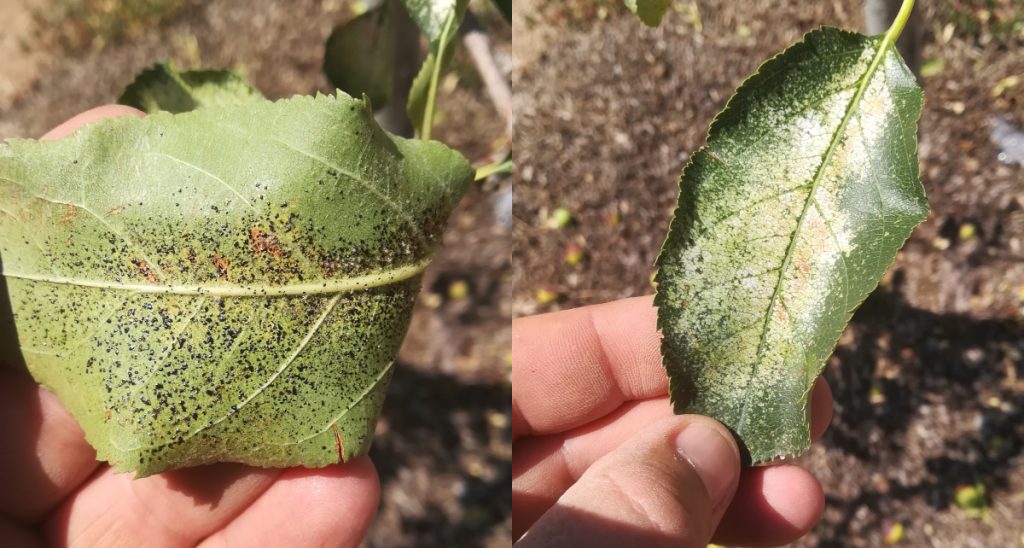
The Tingidae family of insects, often referred to as Lace Bugs, are very small insects that infest the underside on apple leaves (apple, pear, quince), but also the eggplants. There are more than 2000 different species.
Lace in English means lace. Insects are called lace insects because both their thorax and wings are delicate and resemble lace.
Symptom of infestation
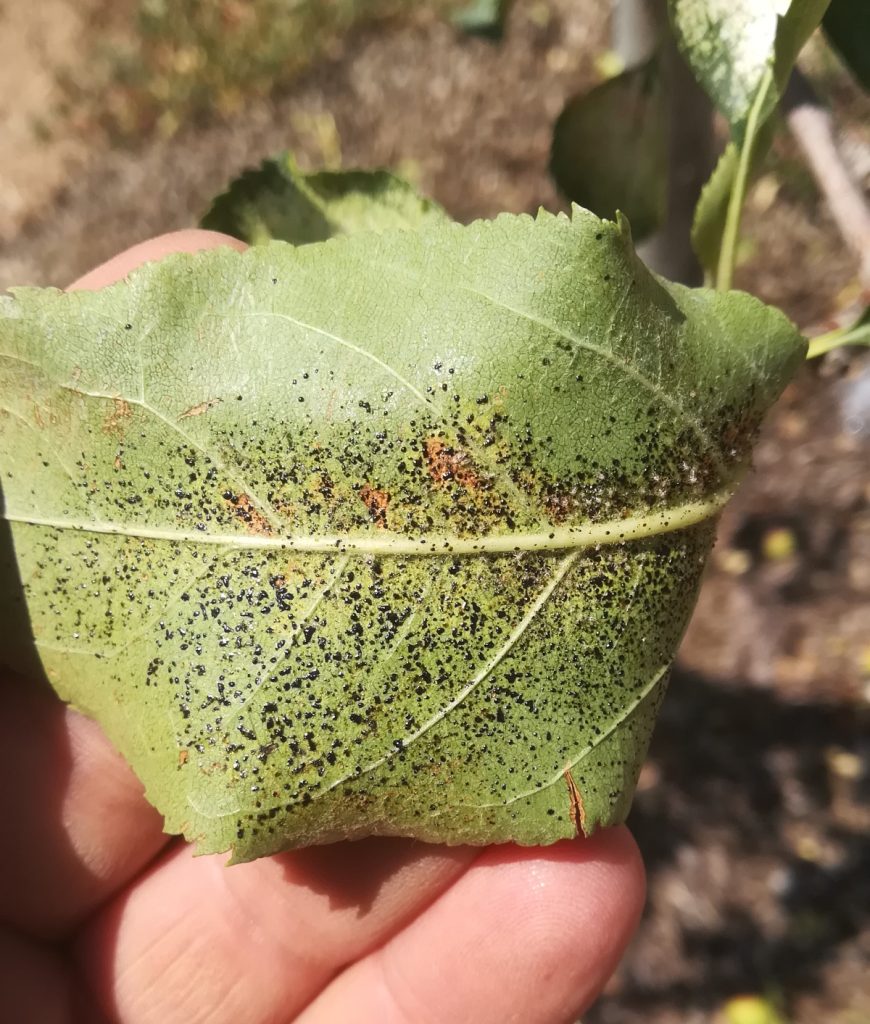
Many small black spots appear on the underside of the leaves which are usually shiny.
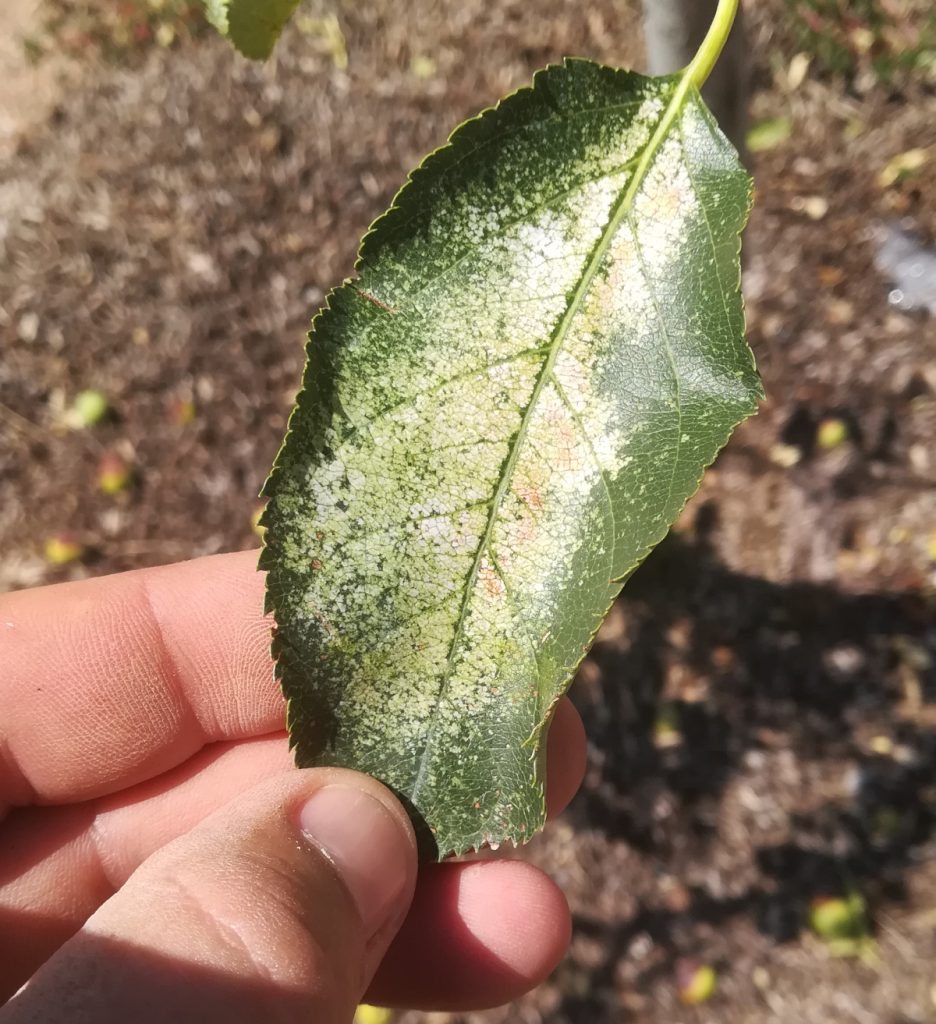
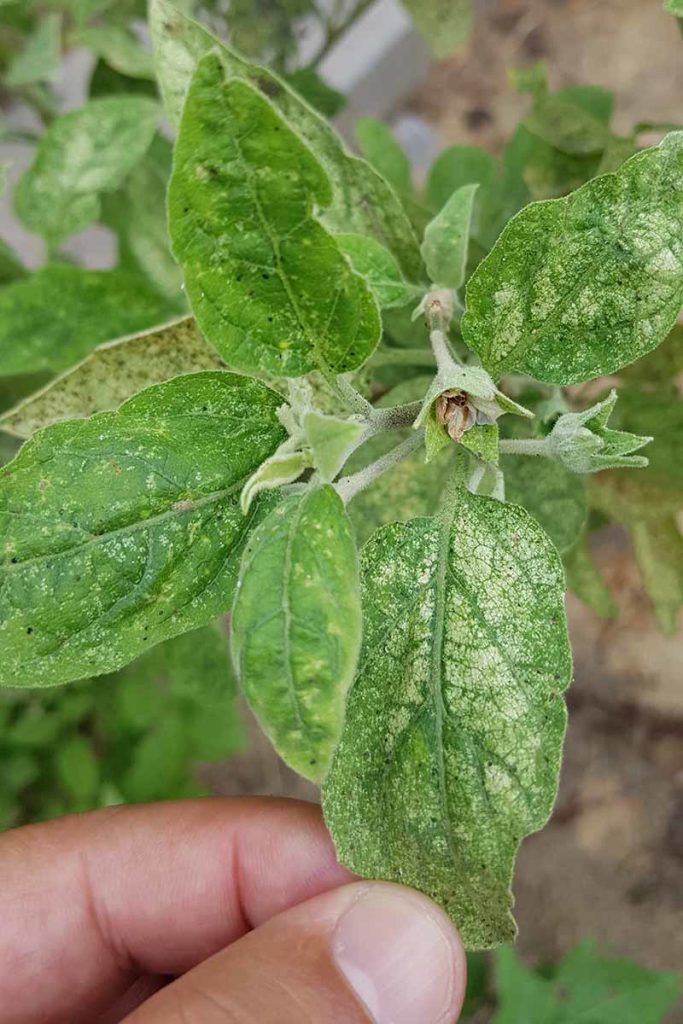
The upper part of the leaves shows discoloration and in some places they seem to have a silvery tint.
If Tingidae (Lace bugs) have infested much of the leaves of a tree or plant, the foliage of the tree or plant will turn from green to white or silvery.
Trees and vegetables affected
Lace bugs usually attack pear trees, apple trees, quince trees (the apple trees) and of vegetables, eggplants.
Season of infestation
Tingindae insects attack tree leaves when the climate is warm and dry. This occurs in the summer months. From July to August.
Risk of infestation
If the insects have infested a small number of leaves, then there is practically no danger to the trees or plants.
But if they have infested the majority of the leaves, then things change.
The tree may have reduced fruit set.
It may shed the affected leaves.
The good news is that the next year, the tree will produce new leaves and continue to grow normally.
Life cycle of the insect
Most insects in the Tingindae family are born grow up and die on the same tree.
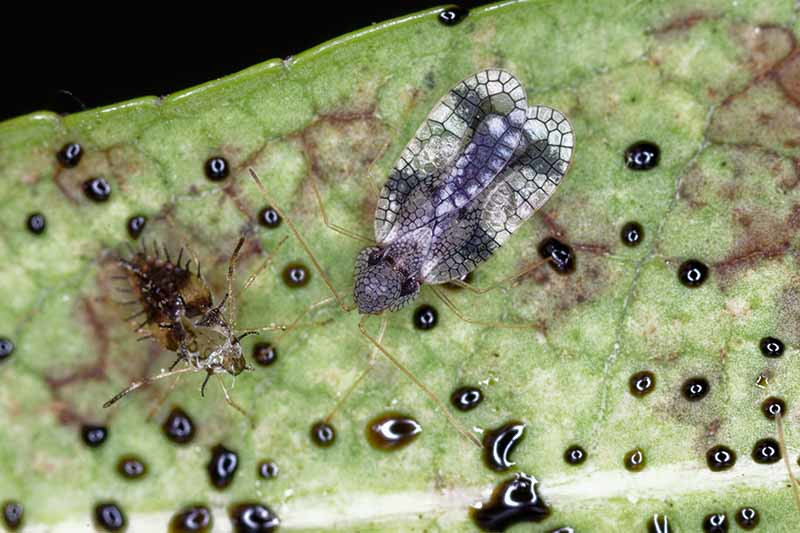
Most species have one or two generations per year. Some, however, have multiple generations. Most species overwinter as adults. Some species overwinter as eggs or nymphs. Species in this group, have incomplete metamorphosis as the incomplete phases of the insect resemble those of the adult insect. The difference is that the immature insects are smaller and without wings.
The insect life cycle lasts from 30 to 40 days.
In the spring, adult insects fly to host trees and begin feeding on the new leaves. They mate and lay clusters of small eggs on the underside of the leaves near the central leaf vein.
Some species will not lay their eggs deep in the leaf tissue. Others lay them deep and seal them with a brown substance.
The eggs will hatch into nymphs after about 2 weeks. The nymphs feed for 3 to 4 weeks and go through 5 stages as they grow. They leave their skins attached to the underside of the foliage.
Once they become adults in winged insects, they will mate and lay a second generation of eggs that will produce new insects that will feed until late summer and early fall.
The adults have needle-like mouthparts that they use to suck the sap from the underside of the leaves. The corresponding upper part of the leaves becomes discoloured and ceases to be green.
The black spots seen on the lower part of the leaves are the insect’s apocryphae.
Sources
How to identify and control lace bugs
Tags: APPLE TREE • BUGS • EGGPLANT • ENEMIES • LACE BUG • PEAR TREE • PLANT DISEASE • PLANTS ENEMY • QUINCE TREE • TINGIDAE

